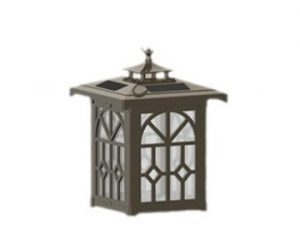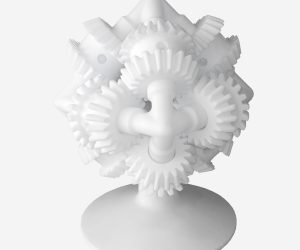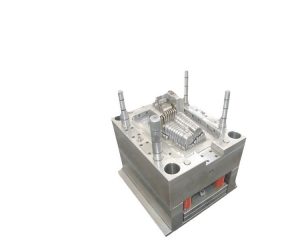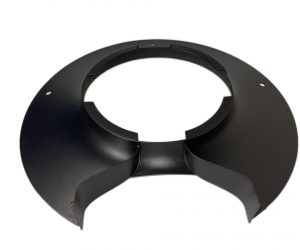The insidious specter of cavities—those volumetric betrayals within injection-molded parts—demands a multifaceted, rigorously scientific approach to prevention and remediation. Mere adherence to simplistic guidelines is insufficient; mastery of the underlying physics and material science is paramount. Failure to achieve this mastery results in compromised part integrity, jeopardizing both product functionality and the very reputation of the manufacturer.
Mold Design: A Symphony of Fluid Dynamics: The mold itself transcends the role of a mere container; it's a meticulously engineered microcosm where the complex dance of polymer flow unfolds. Gate placement, far from being an arbitrary decision, necessitates a deep understanding of flow simulation software and the intricate interplay of shear stresses, pressure gradients, and melt viscosity. Suboptimal gate design, characterized by insufficient flow capacity or poorly positioned runners, inevitably leads to stagnation zones, the breeding grounds for cavity formation. Furthermore, the cooling channel architecture demands careful consideration; inadequate cooling can result in premature solidification and incomplete filling, while excessive cooling can induce internal stresses and warpage, indirectly contributing to cavity formation.
Material Selection: Beyond the Datasheet: Selecting a resin is not a simple matter of choosing from a catalog. Rheological properties, specifically melt flow index (MFI) and viscosity curves as functions of temperature and shear rate, must be meticulously analyzed in conjunction with the part geometry. Shrinkage behavior, often overlooked, plays a critical role; anisotropic shrinkage can induce internal stresses that exacerbate cavity formation. Collaboration with material suppliers should extend beyond superficial consultations; a deep understanding of the material's molecular structure and its response to processing parameters is essential.
Process Parameter Optimization: A Delicate Balancing Act: Injection speed and pressure are not independent variables; their synergistic interaction determines the filling dynamics. Excessive speed can lead to jetting and weld-line defects, while insufficient pressure results in incomplete filling. Precise control, often achieved through advanced feedback systems and real-time monitoring, is crucial. Temperature control extends beyond simple thermostat settings; it demands a sophisticated understanding of heat transfer within the mold and the influence of thermal gradients on melt viscosity and solidification kinetics.
Venting: The Silent Guardian Against Entrapment: Venting is not merely about releasing air; it's about managing the complex interplay of gases dissolved within the polymer melt. Insufficient venting leads to the formation of gas pockets, often manifesting as subsurface voids that can compromise part strength. The design of vent channels necessitates a detailed understanding of gas permeability and the pressure differentials during the injection process.
Surface Finish: The Mirror to Material Flow: A highly polished mold surface minimizes shear forces and promotes smooth, uninterrupted flow. Microscopic surface imperfections can act as nucleation sites for cavity formation, highlighting the importance of meticulous surface finishing techniques.
Part Design: Form Follows Function, Minimizing Stress: Part design must prioritize minimizing stress concentrations. Thick sections, sharp corners, and abrupt changes in wall thickness are prime candidates for cavity formation. Strategic incorporation of fillets, ribs, and other design features can mitigate these stress concentrations and promote uniform material flow.
In conclusion, preventing and rectifying cavities requires a holistic, scientific approach that transcends simple checklists. Only through a thorough understanding of the underlying principles of fluid dynamics, material science, and process engineering can the challenges of cavity formation be effectively addressed.
Fixing Cavities in Injection Molding:
The etiology of injection molding cavities, those insidious voids marring otherwise pristine parts, demands a multifaceted diagnostic approach exceeding mere symptomatic treatment. Simple adjustments, while sometimes efficacious, often mask deeper systemic flaws. Let us dissect the pathology:
Injection Parameter Pathogenesis: Insufficient injection speed or pressure, far from being isolated variables, often reflect a cascade of interrelated problems. Low injection speeds may indicate inadequate melt viscosity, necessitating a reevaluation of material selection or processing temperature. Insufficient pressure, conversely, might signal a compromised hydraulic system or a mold clamping force inadequate to withstand the injection process. Empirical adjustments must be guided by rigorous analysis, not mere guesswork. Detailed pressure-time curves and melt flow index (MFI) measurements are indispensable.
Mold Venting: A Respiratory System for Molten Polymers: Inadequate venting transcends mere air expulsion; it addresses the volatile outgassing inherent in many polymers. Simply adding vents is insufficient; strategic placement, optimized vent geometry, and the careful consideration of air flow dynamics are crucial. Finite element analysis (FEA) can predict and mitigate potential pressure build-ups, guiding the design of an efficient venting system.
Mold Temperature: A Thermo-Rheological Conundrum: Mold temperature manipulation is not a blunt instrument. Precise temperature control across the mold surface, often requiring sophisticated thermal management systems, is essential to avoid differential shrinkage and the consequential formation of cavities. Furthermore, the interaction between mold temperature, material properties, and cooling rates must be carefully considered to optimize the overall process.
Gate Geometry: A Hydraulic Crossroads: Gate location and design are not arbitrary decisions. The gate acts as a critical flow restrictor, and its geometry directly influences the melt front propagation. FEA simulations, coupled with experimental validation, are necessary to optimize gate design for uniform filling and minimize shear stresses that can lead to cavity formation. Consideration should be given to the use of advanced gate designs, such as hot runners, to further enhance flow characteristics.
Part Design: The Architect's Responsibility: Cavities are often a direct consequence of poor part design. Thick sections, sharp corners, and insufficient draft angles all contribute to uneven filling and the entrapment of air. Design for manufacturability (DFM) principles must be rigorously applied, utilizing advanced CAD software and simulation tools to predict and mitigate potential problems.
Material Selection: The Alchemist's Art: Material selection is not a trivial matter. The rheological properties of the polymer, including its melt viscosity, thermal stability, and tendency to outgas, are paramount. Careful consideration of material compatibility with the mold material and the specific application requirements is essential. The use of specialized additives, such as nucleating agents, can further enhance material flow and reduce the propensity for cavity formation.
Expert Consultation: Beyond Empirical Solutions: Persistent cavity formation necessitates a collaborative approach involving experienced mold designers, process engineers, and material scientists. Root cause analysis, often involving sophisticated diagnostic tools and techniques, is essential to identify and address the underlying causes. This may involve advanced techniques such as acoustic emission monitoring or micro-computed tomography (micro-CT) to visualize internal defects.
The production of high-quality injection molded parts is not merely a matter of routine operation; it is a complex interplay of material science, engineering design, and process optimization. A proactive, scientifically-rigorous approach, embracing advanced diagnostic and simulation tools, is essential to achieve consistent, defect-free production.
The insidious specter of cavity formation in injection molding—a seemingly mundane defect—presents a complex challenge to manufacturers striving for pristine part quality. Its genesis is not a simple matter of insufficient cooling or flawed venting, but rather a confluence of subtle, often intertwined, factors operating within the chaotic dynamics of the molding process. Understanding these intricate interactions requires a nuanced perspective, moving beyond simplistic cause-and-effect relationships.
Inadequate thermal management, while frequently cited, is far from a monolithic problem. It manifests not merely as insufficient cooling time or poorly designed channels, but also as a consequence of material-specific thermal properties often overlooked. The latent heat of fusion, coupled with the complex interplay of conductive and convective heat transfer within the mold, creates a dynamic thermal landscape where seemingly minor variations in processing parameters can lead to catastrophic cavity formation. Furthermore, the transient nature of the cooling process, influenced by factors such as mold temperature uniformity and the inherent variability of the injection stream, makes precise prediction and control exceptionally challenging.
Venting, similarly, transcends the simplistic notion of air escape. The intricate hydrodynamics of polymer flow within the mold cavity, coupled with the non-Newtonian behavior of molten plastics, creates complex pressure gradients that can trap air within seemingly innocuous locations. Suboptimal vent design, therefore, is not merely a matter of size and placement, but also a function of its interaction with the overall flow field, which is itself influenced by gate design and injection parameters. The resulting air entrapment can manifest as insidious, micro-scale cavities, often invisible to the naked eye, yet profoundly impacting part strength and integrity.
Beyond these primary culprits, a host of secondary factors conspire to exacerbate the problem. Gate design, far from being a simple matter of size and location, dictates the flow front propagation and influences the development of weld lines—potential sites for weakness and cavity nucleation. Material selection, beyond mere compatibility, must consider the rheological properties of the polymer melt, its susceptibility to shear-thinning, and its propensity for gas entrapment. Inconsistent injection speed, finally, introduces unpredictable variations in shear rates and pressure gradients, further destabilizing the already complex flow dynamics and increasing the likelihood of cavity formation.
Addressing this multifaceted challenge requires a holistic approach. It demands not merely reactive fixes but proactive strategies that encompass advanced process simulation, meticulous material characterization, and sophisticated mold design optimization. The implementation of advanced control systems, capable of real-time monitoring and adjustment of key processing parameters, is crucial for mitigating the unpredictable nature of the process. Only through a deep understanding of the underlying physics and a commitment to rigorous process control can manufacturers hope to conquer the pervasive problem of cavity formation and achieve the consistently high-quality parts demanded by modern applications.
What is cavity in injection molding?
Cavity is a defect in injection molding that occurs when air pockets or bubbles form inside the plastic part during the filling stage. Cavity can affect the dimensional accuracy, strength, and appearance of the plastic part, and may lead to cracks, leaks, or cosmetic flaws.
Cavity is different from sink marks, which are depressions on the surface of the plastic part caused by shrinkage during the cooling stage. Cavity occurs inside the plastic part, while sink marks occur on the surface.
How to prevent cavity in injection molding?
The best way to prevent cavity in injection molding is to optimize the process parameters and the mold design. Some of the factors that can help prevent cavity are:
- Injection pressure: Increasing the injection pressure can help fill the mold cavity faster and more evenly, reducing the chances of air entrapment. However, too high injection pressure can cause other defects such as flash or warping, so it is important to find the optimal balance.
- Injection speed: Increasing the injection speed can also help fill the mold cavity faster and more evenly, reducing the chances of air entrapment. However, too high injection speed can cause shear stress and turbulence in the melt flow, which can degrade the plastic material or cause other defects such as jetting or burn marks. Therefore, it is important to find the optimal balance.
- Mold temperature: Increasing the mold temperature can help reduce the viscosity of the plastic material and improve its flowability, reducing the chances of air entrapment. However, too high mold temperature can cause other defects such as flash or warping, or increase the cooling time and cycle time. Therefore, it is important to find the optimal balance.
- Venting: Venting is a technique that allows air to escape from the mold cavity during the filling stage, reducing the chances of air entrapment. Venting can be achieved by adding vents or channels on the mold surface or near the gate area, or by using vacuum-assisted molding. Venting should be designed carefully to avoid plastic leakage or contamination.
- Mold design: The mold design should also be optimized to prevent cavity in injection molding. Some of the factors that can affect mold design are:
- Gate location and size: The gate is the opening where the plastic material enters the mold cavity. The gate location and size should be chosen to ensure a uniform and balanced filling pattern, avoiding air entrapment or weld lines. The gate should also be large enough to allow sufficient material flow, but not too large to cause flash or excessive pressure drop.
- Runner system: The runner system is the network of channels that connects the gate to the sprue (the main channel where the plastic material enters from the injection machine). The runner system should be designed to minimize pressure drop, turbulence, and material waste, while ensuring a uniform and balanced filling pattern. The runner system should also be compatible with the type and size of the plastic material used.
- Wall thickness: The wall thickness of the plastic part should be uniform and consistent throughout the mold cavity, avoiding abrupt changes or variations. This can help reduce shrinkage and warping, as well as improve heat transfer and cooling efficiency. The wall thickness should also be appropriate for the type and size of the plastic material used.
How to fix cavity in injection molding?
If cavity occurs in injection molding, there are some possible ways to fix it:
- Adjusting process parameters: Depending on the cause of cavity, adjusting process parameters such as injection pressure, injection speed, mold temperature, or holding pressure may help fix it. For example, if cavity is caused by insufficient pressure or speed, increasing them may help fill the mold cavity better and eliminate air pockets. However, adjusting process parameters may also affect other aspects of quality and productivity, so it is important to monitor and test them carefully.
- Modifying mold design: Depending on the cause of cavity, modifying mold design such as adding or changing vents, gates, runners, or wall thickness may help fix it. For example, if cavity is caused by poor venting or unbalanced filling pattern, adding or changing vents or gates may help improve air escape and material flow. However, modifying mold design may also require additional time and cost, so it is important to evaluate its feasibility and effectiveness.
- Repairing plastic parts: Depending on the severity and location of cavity, repairing plastic parts may be possible by using techniques such as welding, filling, or coating. For example, if cavity is small and located in a non-critical area, welding or filling it with compatible plastic material may help restore its strength and appearance. However, repairing plastic parts may also affect their performance and durability, so it is important to test and verify them carefully.
Conclusion
Cavity is a common defect in injection molding that can affect the quality and appearance of plastic parts. It occurs when air pockets or bubbles form inside the plastic part during the filling stage. To prevent cavity in injection molding, it is important to optimize the process parameters and the mold design. To fix cavity in injection molding, it is possible to adjust process parameters, modify mold design, or repair plastic parts, depending on the cause and severity of cavity. By understanding and controlling cavity in injection molding, it is possible to improve the quality and efficiency of plastic production.




